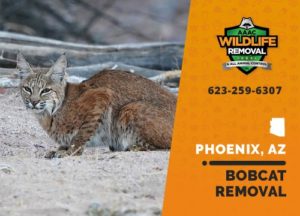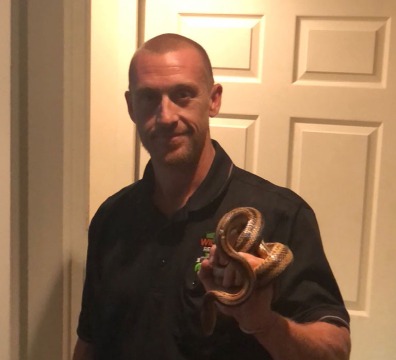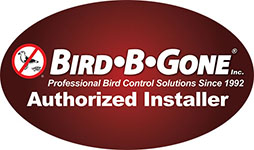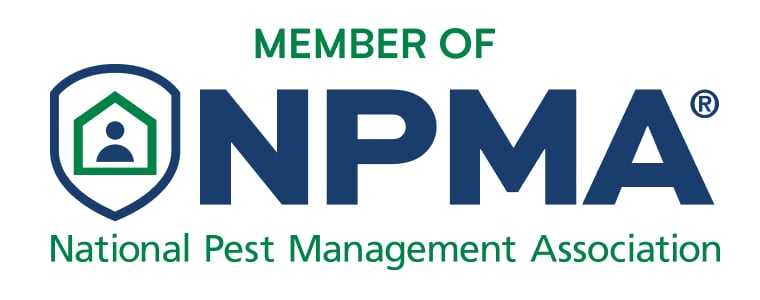Bobcats may be a natural part of Arizona’s desert ecosystem, but when they wander into neighborhoods, the situation can turn risky fast. In Phoenix and surrounding communities, it’s not uncommon for these stealthy predators to venture close to homes in search of food, water, or shelter. While they generally avoid people, bobcats can become aggressive if cornered or threatened, especially when protecting their young. Their presence can put pets, small livestock, and even curious children in harm’s way.
At AAAC Wildlife Removal of Phoenix, we specialize in safe, humane bobcat removal that protects both your property and local wildlife. Our licensed team understands Arizona’s wildlife regulations and uses approved techniques to handle these encounters without unnecessary harm. From identifying signs of bobcat activity to securing your yard against future visits, we provide a complete solution so you can feel safe and confident on your property again.
Why Bobcat Removal Matters in Phoenix
Living in the Phoenix area means sharing space with diverse desert wildlife, and bobcats are among the most common large predators you might encounter. While they play an important role in keeping rodent and rabbit populations in check, they can quickly become a bobcat problem if they lose their natural fear of humans. As urban development expands into their natural habitat, sightings have become more frequent, especially in neighborhoods near desert washes, golf courses, and open spaces. When these encounters occur, safe solutions like bobcat trapping and humane wildlife trapping become essential to protect both people and animals.
These agile hunters are capable of leaping fences, climbing trees, and slipping through surprisingly small gaps, which makes it easy for them to access backyards. Once inside, a bobcat problem can include preying on household pets, chickens, or other small animals. In some cases, bobcats have been known to approach porches, pool areas, and even pet enclosures in broad daylight. Their boldness increases the risk of an unwanted encounter, particularly if they are raising young nearby.
Beyond the immediate safety concerns, bobcats can cause property damage while hunting or establishing a den. You might notice dug-out areas under sheds, strong scent markings along fences, or the remains of prey left in the yard, all of which can create sanitation problems and unpleasant odors. Because bobcats are a protected species in Arizona, removing them requires both specialized skills and compliance with state wildlife regulations. This is why working with a licensed professional who offers humane wildlife trapping and relocation is the safest, most responsible way to handle a bobcat problem in Phoenix.
Signs You May Have a Bobcat on Your Property
Distinctive Tracks and Scat
Bobcat tracks are one of the most recognizable signs of their presence. They look similar to domestic cat prints but are noticeably larger, usually measuring around two inches across. Unlike dog prints, they typically do not show claw marks because bobcats keep their claws retracted while walking. These tracks are often found along fence lines, in sandy soil, or near areas where the bobcat has been hunting.
Scat is another strong indicator and is often left in visible spots as a way for bobcats to mark territory. It can usually be identified by the presence of fur, feathers, or tiny bone fragments from their prey. You may find these droppings in garden beds, along walkways, or near water sources. Observing both tracks and scat together increases the likelihood that a bobcat is regularly visiting your property.
Missing or Injured Pets and Livestock
If outdoor pets suddenly disappear or sustain unexplained injuries, it may be due to a bobcat hunting in the area. Bobcats are powerful predators capable of taking down animals much larger than themselves, making small dogs, cats, chickens, ducks, and rabbits especially vulnerable. In some cases, the predator may strike quickly and retreat without being seen, leaving only signs of a struggle behind.
Sometimes, bobcats will store or “cache” their kills for later, hiding them under shrubs, tall grass, or debris. This behavior helps them protect their food from other predators but can lead to unpleasant discoveries for homeowners. If you notice partially eaten prey or disturbed areas where carcasses are concealed, it’s a clear sign that a bobcat may be frequenting your property.
Noises and Physical Markings
Unusual sounds in your neighborhood, especially at night or during the early morning, can indicate bobcat activity. They may produce loud yowls, growls, or screeches, particularly during mating season or when defending their territory. These calls can carry over long distances, making them more noticeable in quiet residential areas. Even if you don’t see the animal, these sounds often precede or coincide with other signs of their presence.
Physical markings around your property can also reveal a bobcat’s presence. Claw marks on trees, fence posts, or wooden structures indicate territorial behavior. You might also find disturbed soil where bobcats have dug shallow scrapes to mark their scent or prepare a den site. Spotting these signs early is crucial, as it allows you to take preventive measures before the situation escalates.
Our Bobcat Removal Process
- Inspection and Risk Assessment– We begin with a detailed property inspection to identify bobcat activity, such as tracks, scat, prey remains, and possible den sites. Our team also pinpoints access points like gaps in fencing, open gates, or low-hanging branches since bobcats are attracted to areas where food, water, and shelter are easily available. This evaluation helps us determine the best strategy for safe, effective animal removal while assessing the level of risk to your family, pets, and property.
- Humane Capture Methods– Using Arizona-approved and humane for bobcat trapping and removal techniques, we safely capture the bobcat without causing unnecessary stress or injury. Traps are placed in strategic locations based on the animal’s movement patterns, and we monitor them closely to avoid capturing non-target wildlife. Our humane approach is part of our commitment to responsible wildlife removal services, ensuring both the bobcat and your property are protected throughout the process.
- Relocation or Removal– Once the bobcat is captured, we relocate it to a safe, suitable habitat far from residential areas, where it can access natural prey and shelter. This relocation prevents it from returning while allowing it to continue its ecological role. If relocation isn’t possible, we work closely with wildlife authorities to decide on the most responsible course of action, making sure our removal and exclusion efforts comply with Arizona law.
- Property Securing and Prevention– After removal, we focus on removal and exclusion strategies to prevent future problems. This includes reinforcing fences, securing gates, and eliminating attractants like unsecured trash, outdoor pet food, and open water sources. We also recommend trimming dense vegetation and sealing potential denning spots, ensuring your property is less inviting to bobcats and reducing the chances of needing animal removal again in the future.
Why Choose AAAC Wildlife Removal of Phoenix
Our licensed and insured team brings years of hands-on experience handling bobcat encounters across Phoenix and the surrounding desert communities. We have an in-depth understanding of bobcat behavior, habitat preferences, and the legal requirements for their safe, humane removal. Every step of our process is designed to comply with Arizona wildlife regulations, ensuring the animal is handled ethically and without unnecessary harm. We also tailor each removal plan to the specific layout and conditions of your property, providing targeted solutions rather than one-size-fits-all approaches. This level of care and expertise means you can trust that both your safety and the wellbeing of the bobcat are in capable hands.
In addition to our technical skill, we pride ourselves on delivering a fast and reliable response, knowing that a bobcat sighting can cause immediate concern for families and pet owners. We offer same-day and emergency service options to address urgent situations before they escalate. Once the bobcat is removed, we shift focus to long-term prevention, offering customized recommendations such as reinforced fencing, gate repairs, and habitat adjustments to reduce attractants. By combining immediate action with proactive prevention, we help you solve the current problem while minimizing the risk of bobcats returning to your property in the future.
Preventing Future Bobcat Problems
Remove Attractants from Your Property
One of the most effective ways to discourage a critter like a bobcat is by eliminating the food, water, and shelter that draw them in. If you see a bobcat in your yard, secure trash cans with tight-fitting lids, avoid leaving pet food outdoors, and keep bird feeders out of reach or bring them in at night to reduce prey animals like rodents. Removing water sources, such as pet bowls or standing puddles, also makes your yard less inviting. By limiting these attractants, you greatly reduce the likelihood of bobcats viewing your property as a hunting ground or resting spot.
Improve Fencing and Barriers
Bobcats are agile climbers and jumpers, so standard fencing often isn’t enough to get rid of your bobcat problem. Installing taller fences, ideally six feet or higher, and adding outward-angled extensions at the top can help prevent them from scaling over. For areas where bobcats might dig underneath, consider burying a section of wire mesh along the base of the fence. These wildlife-proofing modifications create a physical barrier that makes entry much more difficult, even for determined predators.
Limit Hiding and Denning Spots
Dense vegetation, woodpiles, and overgrown shrubs can provide shelter for bobcats, their prey, and other critters. Keeping your landscaping trimmed, removing clutter, and sealing off crawl spaces under decks, sheds, or even your attic helps reduce potential hiding and denning areas. The more open and exposed your yard feels, the less likely bobcats will want to linger. Maintaining these changes over time ensures your property remains less attractive to wildlife and better protected from future intrusions.
Service Areas in Phoenix, AZ
AAAC Wildlife Removal Company proudly serves homeowners and businesses throughout the Phoenix metropolitan area. Our coverage includes not only the heart of Phoenix but also surrounding communities such as Scottsdale, Mesa, Chandler, Glendale, Tempe, Peoria, Paradise Valley and Surprise. We also extend our services to more rural desert-edge neighborhoods where bobcat encounters are more frequent due to proximity to open land and natural washes.
Whether you live in a suburban neighborhood, near a golf course, or on a property bordering desert terrain, our team can respond quickly with local knowledge and expertise. We understand how bobcat activity patterns differ across the Valley and tailor our removal and prevention strategies accordingly. No matter where you’re located in the Phoenix metro area, you can count on us for fast, professional, and humane bobcat control solutions.
Call to Action – Schedule Your Bobcat Removal Today
Don’t let a bobcat sighting put your family, small pets, or property at risk. The sooner you reach out for professional wildlife help, the easier it is to prevent potential harm or recurring visits. At AAAC Wildlife Removal of Phoenix, we provide safe, humane, and effective bobcat removal services as part of our comprehensive wildlife control solutions. We also other animal control like raccoon removal, bat removal squirrel removal and other wildlife problem.
Call us today or fill out our online form to schedule an inspection and removal service. Our experienced team of professional wildlife experts will not only resolve the immediate problem but also provide tailored prevention strategies to keep bobcats from returning. Protect your home and enjoy peace of mind knowing your wildlife concerns are handled by trusted specialists.










